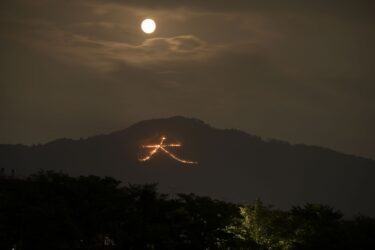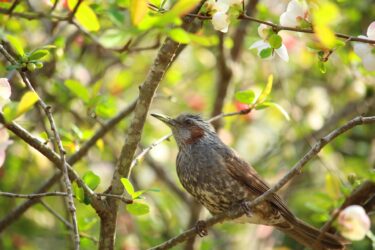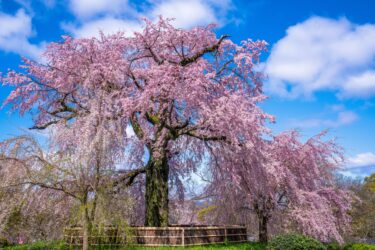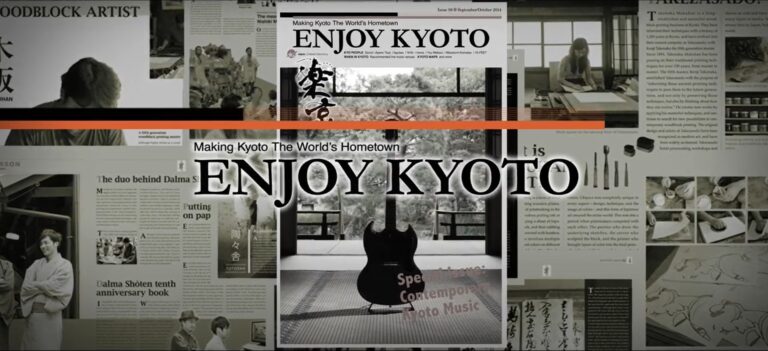Among Kyoto’s many attractions, its annual festivals offer visitors a unique glimpse into the deep-rooted customs and seasonal celebrations that have been passed down through generations. Whether you’re planning a visit in the chilly days of January or the warm evenings of July, Kyoto is host to quite a few different events, both modern and traditional, so you’ll want to check the calendar and know what’s on around the time of your visit. Here’s a guide to some of the most important festivals throughout the year.
Kyoto Toka Ebisu Festival

When: January 8th-12th
Where: Ebisu Shrine
The new year in Kyoto kicks off with the Toka (toka meaning the tenth day of the month) Ebisu Festival, a lively celebration at Ebisu Shrine, dedicated to the titular god of prosperity and business, one of the Seven Gods of Fortune. Locals and visitors alike flock to the shrine to pray for success in the coming year. The shrine is adorned with bamboo branches decorated with lucky charms, creating a festive and hopeful atmosphere.
Setsubun

When: February 3rd
Where: Various temples and shrines
Setstubun, also known as the Bean-Throwing Festival, is a celebration that marks the arrival of spring across Japan. The centerpiece of Setstubun is always the ritual of throwing roasted soybeans, known as fukumame, to drive away evil spirits and bring good fortune. Families gather in their homes, at shrines, and temples to toss the beans while chanting “Oni wa soto! Fuku wa uchi!” (Demons out, luck in!). This playful and energetic tradition is believed to cleanse the space and usher in a new season of prosperity. Setsubun festivities at shrines often feature exciting performances with performers dressed as demons/oni.
The most famous Setsubun celebrations in Kyoto take place at temples such as Kitano Tenmangu Shrine and Heian Jingu Shrine. It’s a fun and energetic event, and a lively way to mark the end of the chilly winter months.
To-ji Temple Flea Market
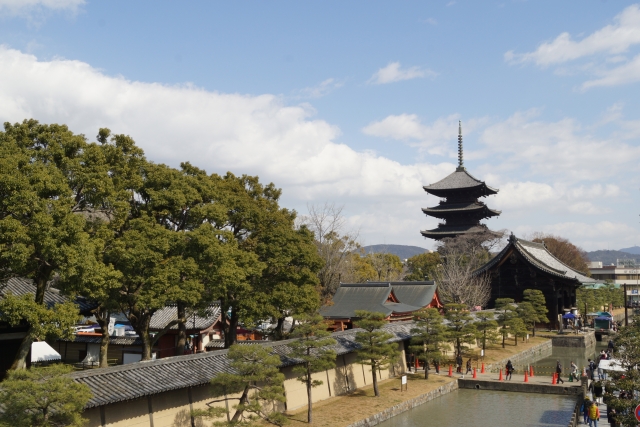
When: 21st of every month
Where: To-ji Temple
While not a traditional festival, the monthly Kobo-ichi flea market at To-ji Temple is a vibrant local event. On the 21st of each month, the grounds of this UNESCO World Heritage site transform into a bustling market with hundreds of stalls, offering all kinds of antiques, crafts, second-hand goods, and even food. The date of the market, the 21st, comes from the day the legendary monk Buddhist Kukai died in 835. The market is particularly lively in December, when it’s worth a visit, even if you’re only browsing and not looking to buy.
Higashiyama Hanatouro
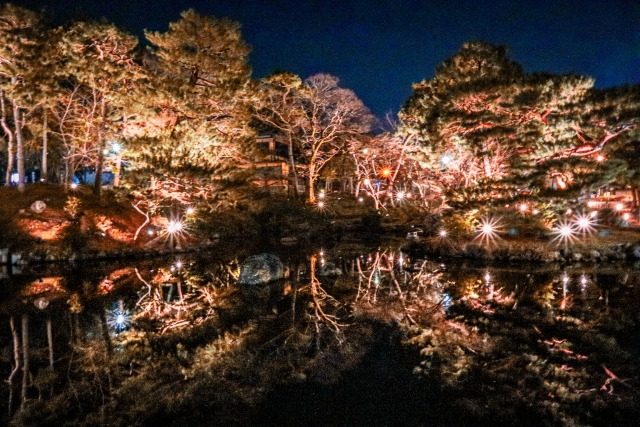
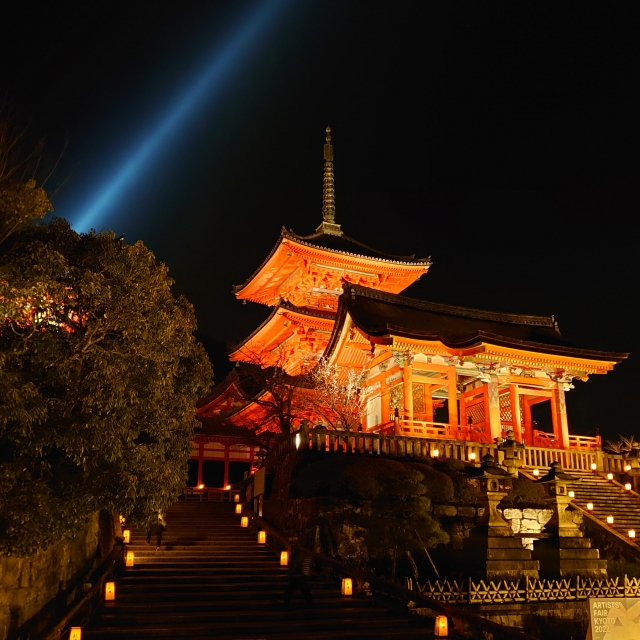
When: Mid-March
Where: Higashiyama District
As winter turns to spring, the streets of the Higashiyama district come alive with the soft glow of lanterns during the Higashiyama Hanatouro. Visitors can wander through the narrow alleyways and discover temples, shrines, and the historical streets themselves, all bathed in a warm and inviting glow that lends them a serene and romantic atmosphere you won’t find in an ordinary daytime visit. Kiyomizu-dera Temple, one of Kyoto’s most iconic landmarks, is a particular highlight, with its pagoda illuminated against surrounding hills. It’s an ideal time to explore the historic streets of Kyoto’s eastern hills.
Aoi Festival
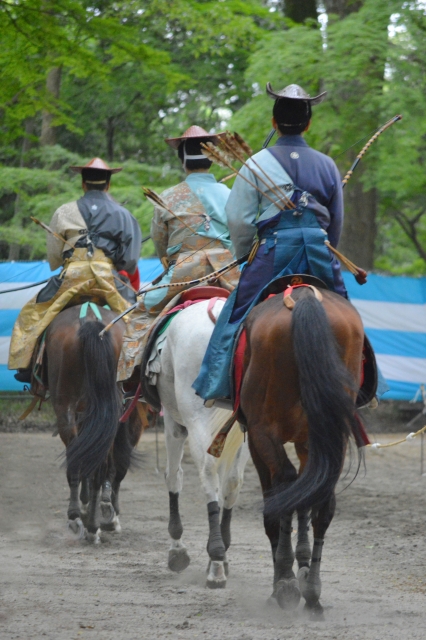
When: May 15th
Where: Imperial Palace, Shimogamo Shrine, Kamigamo Shrine
Aoi Matsuri dates back to the 6th century, and is one of Kyoto’s oldest and grandest festivals. The highlight of this harvest festival is a grand procession from the Kyoto Imperial Palace to Shimogamo and finally Kamigamo Shrines, featuring participants dressed in exquisite Heian Period (794-1185) clothing. The procession includes a diverse array of characters, from imperial court officials and noblewomen to Shinto priests and shrine maidens. The festival’s name, aoi or “hollyhock,” refers to the hollyhock leaves that adorn the costumes and floats of the procession.
Gion Matsuri (Gion Festival)
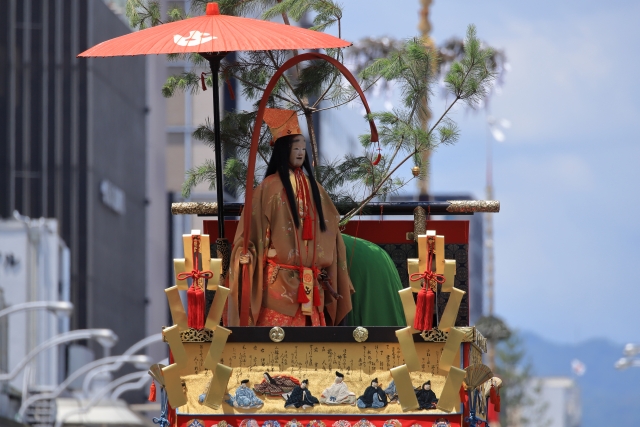
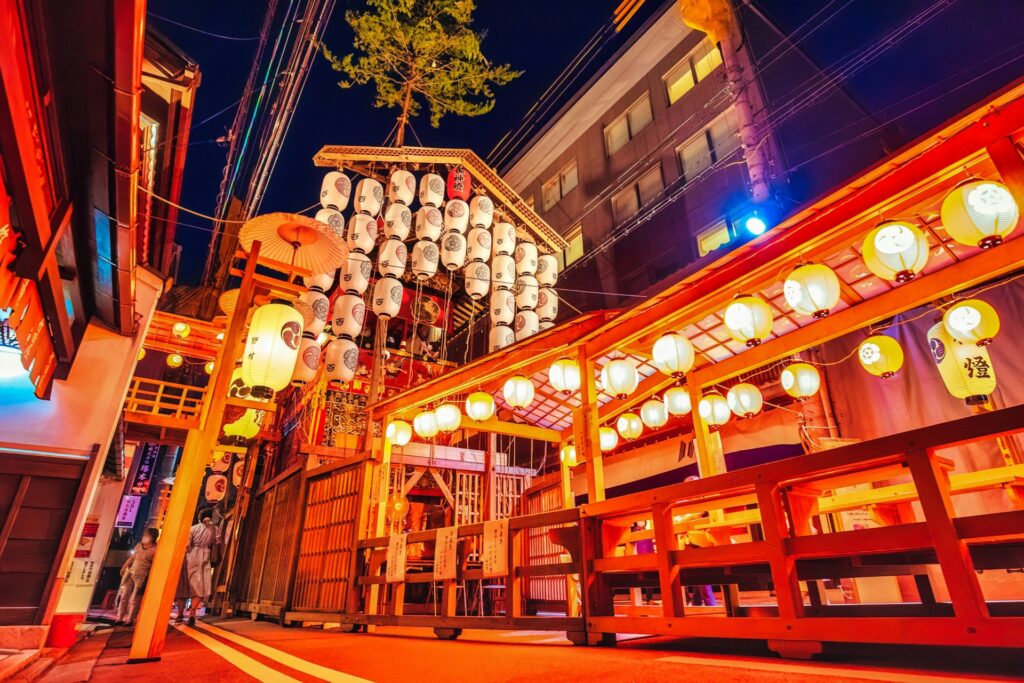
When: July
Where: Downtown Kyoto
Gion Matsuri is undoubtedly Kyoto’s most famous festival, spanning the entire month of July. It’s a celebration that brings the city to life with its grand processions, traditional music, and lively street stalls that fill Kyoto’s downtown neighborhoods with excited onlookers. The festival’s origins can be traced back to the 9th century, when it was established as a means of warding off plague and other misfortunes. Today, Gion Matsuri is a multi-faceted event that spans the entire month of July, with a series of events and rituals leading up to the main processions on July 17th and 24th. These processions (yamahoko junko) see the festival’s giant, beautifully decorated floats, or yamahoko, parade through the streets to the sound of the festival music. Gion Matsuri is a must-see event.
Daimonji Gozan no Okuribi
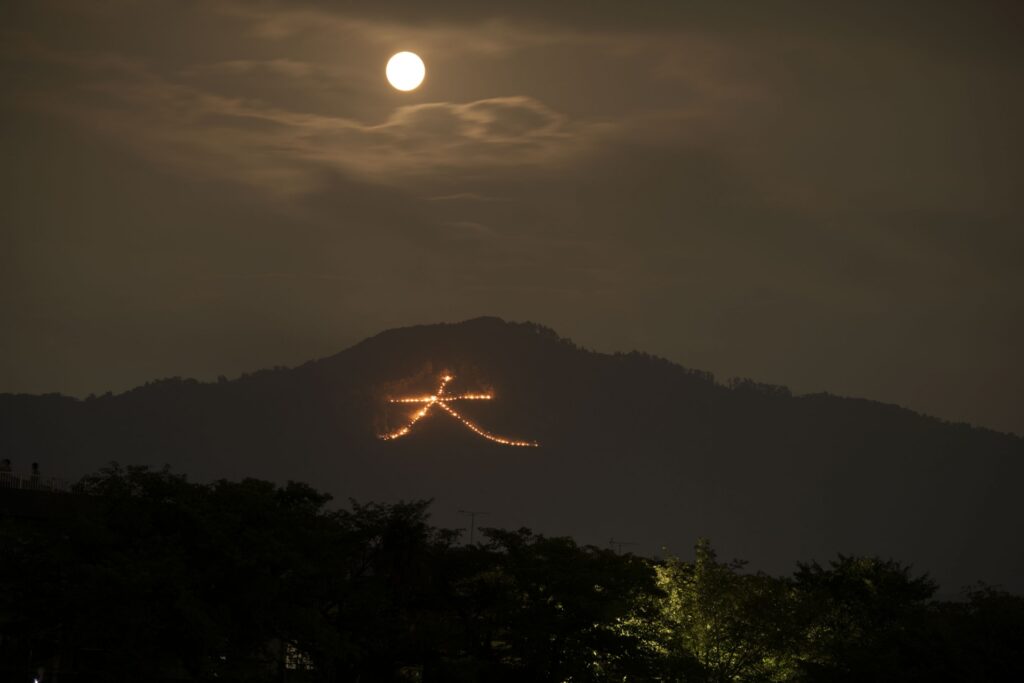
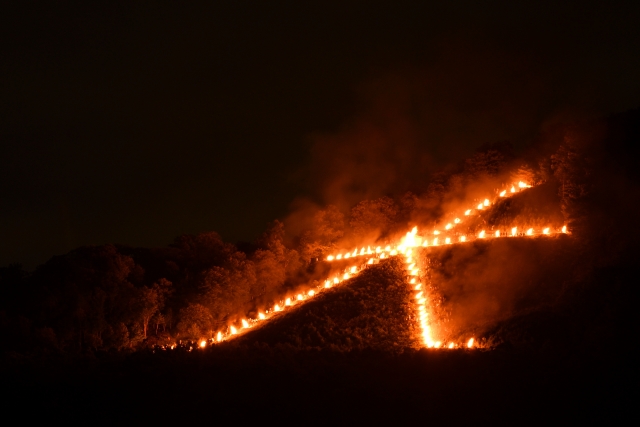
When: August 16th
Where: Various mountains surrounding Kyoto
Gozan no Okuribi is a spectacular fire festival marking the end of the summer Obon season, a time when ancestral spirits are believed to visit the living. The fire-lighting at this dramatic event has roots in the Buddhist practice of sending off the spirits of the dead during this period. On the evening of August 16th, five giant fires are lit on the mountains surrounding Kyoto, each in the shape of a different Chinese character or image. The most famous is the character “大” (dai) on the side of Mt. Daimonji, which is easily visible from many parts of the city, where people will gather to watch as the fire lights up the mountainside.
Jidai Matsuri (Festival of the Ages)

When: October 22nd
Where: Imperial Palace to Heian Jingu Shrine
Jidai Matsuri, or the “Festival of Ages,” takes visitors on a journey through Kyoto’s history. This grand parade features participants dressed in costumes representing various eras, from the Meiji Period (1868-1912) back to the Heian period (794-1185). If you want to get a snapshot of Kyoto in ages past, this is the place to get an up-close look at some history brought to life. The procession begins at the Imperial Palace and ends at Heian Jingu Shrine, offering a vivid portrayal of Kyoto’s past. It’s a fascinating way to witness the city’s historical evolution.
Kurama Fire Festival
When: October 22nd
Where: Kurama, Kyoto
On the same day as Jidai Matsuri, the Kurama Fire Festival offers a more dramatic and intense celebration in the rural village of Kurama, just north of Kyoto. Luckily, this festival is held at night, so if you’re ambitious you may be able to attend both events. This festival’s centerpiece is its dramatic procession of torchbearers in traditional costume, who make their way up the winding paths of Mount Kurama, carrying massive torches that cast a warm, flickering glow over the surrounding landscape. At Yuki Shrine, the torches are piled into a spectacular bonfire. It’s one of Kyoto’s more uniquely theatrical events, and well worth the trip to Kurama if you can make it.
Arashiyama Hanatouro


When: December
Where: Arashiyama District
The year in Kyoto concludes with the Arashiyama Hanatouro, a winter illumination event that transforms the scenic Arashiyama district into a wonderland of lights, just like the Higashiyama area event earlier in the year. Thousands of lanterns line the streets, and the iconic bamboo groves and Arashiyama’s Togetsukyo Bridge are beautifully illuminated. The event also features flower and art installations, making it a perfect way to experience Kyoto’s natural beauty in the crisp winter air.
Kyoto’s festivals are a testament to the city’s deep cultural roots and its ability to blend tradition with seasonal beauty. Each festival offers a unique experience, whether you’re drawn by the grand processions of Gion Matsuri or the serene illuminations of Hanatouro. There’s always something going on in this beautiful city.


